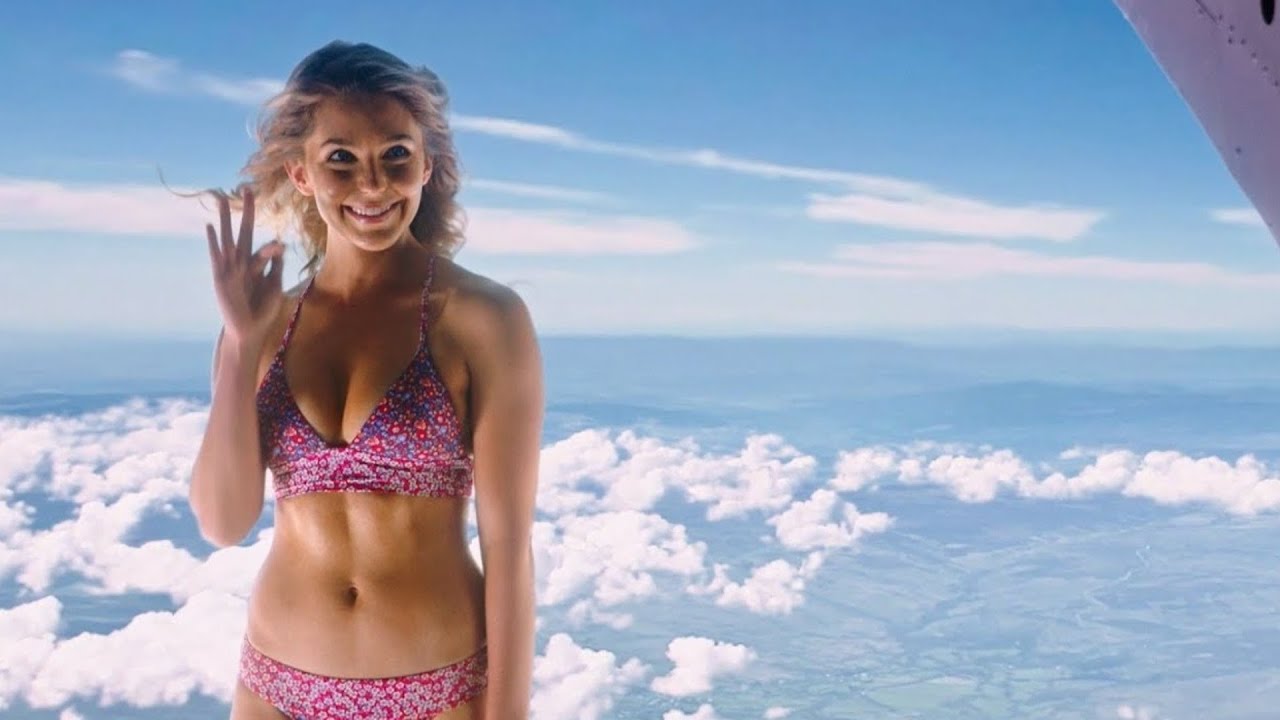Key Takeaways:
- Autonomous Flight: The DJI Neo doesn’t need a controller. It flies itself using AI.
- Portability: Super lightweight and compact, making it easy to carry.
- Video Quality: Good for social media but not the best for high-resolution projects.
- Innovative Features: Includes cool stuff like voice commands and automatic landing.
Hey everyone! If you’re excited about drones and love the idea of a controller-free flying experience, you’ll want to check out the new DJI Neo. In this review, I’ll dive into ten things you need to know about this drone, from its standout features to what might leave you wanting more. Let’s get into it!
1. No Controller Needed: Flying Made Easy
The DJI Neo is shaking things up by ditching the traditional controller. Instead, this drone uses AI to follow you around autonomously. Just place it on your palm, select one of the six flight modes, and hit the mode button. It’ll count down and take off, following you as you move. You can walk in any direction, and the Neo will keep you in the center of the frame, adjusting its position automatically.
One cool feature is its ability to recognize you even if you walk behind an obstacle. However, if you make sudden movements or sharp turns, the Neo might lose track of you temporarily. It will hover in place until you’re back in view. When it’s time to land, just hold out your palm, and it will gently land there. Simple and convenient!
2. Portability: Take It Anywhere
At just 135 grams and the size of a palm, the DJI Neo is incredibly portable. You can easily slip it into a pocket or backpack without needing a special bag. Plus, because it doesn’t require a controller, you save even more space. Its small size means you can take it almost anywhere, from crowded tourist spots to narrow hiking trails.
3. Propeller Guards: Safety First
The Neo comes with built-in propeller guards and detachable cages to protect its blades. These guards are handy if the drone crashes into something, as they help prevent damage. I’ve had a few minor crashes during testing, and the props remained intact. The drone is light and tends to bounce off obstacles rather than getting damaged, but these guards offer extra peace of mind.
4. Quickshots: Effortless Cinematic Shots
The Neo offers six quickshot modes—Follow, Droney, Circle, Rocket, Spotlight, and Custom. You can select these modes using the mode button on top of the drone. For each mode, you can adjust settings like distance and height using the DJI Fly app. Although it would be nice to adjust these settings directly on the drone, the app provides a user-friendly interface for customization.
5. Variety of Control Options: Choose Your Method
You can control the DJI Neo in several ways:
- Autonomous Mode: Just place it on your palm and let it fly.
- Smartphone Control: Use the DJI Fly app for basic controls and a live camera feed.
- DJI RC-N3 Controller: Offers enhanced transmission strength and manual camera controls.
- RC Motion 3 Controller with DJI Goggles 3: Provides an immersive FPV experience with head tracking.
- FPV Remote Controller 3: Allows for manual flying with flips and rolls.
Each control method has its perks, whether you prefer a hands-free experience or a more traditional approach.
6. Video Quality: Social Media Ready
The DJI Neo features a 1/2.3-inch sensor capable of recording 4K video at 30 fps or 1080p at 60 fps. In good lighting conditions, the video quality is clear and suitable for social media. However, the small sensor struggles in low light, leading to noisy and grainy footage. It’s not the best choice for high-resolution or low-light projects, but it performs well for casual use.
7. Annoying Features: What Could Be Better
While the DJI Neo has many great features, there are a few things that might frustrate you:
- No Micro SD Slot: With only 20 GB of internal storage, you’ll need to manage your footage carefully.
- No Obstacle Avoidance: The Neo lacks sensors to avoid obstacles, which could improve safety and tracking.
- High Noise Level: It produces a noticeable high-pitched noise, which can attract unwanted attention.
- No Foldable Design: Unlike some competitors, the Neo doesn’t fold, making it less convenient to carry.
- Occasional Landing Issues: The automatic palm landing sometimes fails, requiring manual intervention.
8. Cool Features: What I Love
Despite a few drawbacks, the DJI Neo boasts some impressive features:
- Offline File Access: Download footage even when the battery is dead, thanks to the USB-C port.
- Audio Capture via App: Record audio through your smartphone while eliminating propeller noise.
- Simultaneous Charging: The new charging hub can charge three batteries in about 60 minutes.
- Voice Commands: Control the drone with voice commands for quick and easy operation.
- Head Tracking with Goggles: Use the DJI Goggles 3 to control the drone by moving your head.
9. Wind Resistance: Keep It Calm
The DJI Neo can handle wind speeds of up to 8 m/s, which is impressive for its size. However, it struggles with anything more than a light breeze, leading to unstable footage. For the best results, use the Neo in calm conditions or indoors.
10. Battery Life: Good Enough for Quick Flights
With a maximum flight time of around 18 minutes, the Neo’s battery life is decent for its size. Since you’ll often use quickshots rather than continuous flight, you can get 15-20 quickshots per battery. With the Fly More Combo, you’ll have plenty of power for a day of filming.
Should You Buy the DJI Neo?
If you’re looking for a fun, autonomous drone that’s easy to carry and perfect for capturing social media content, the DJI Neo is a solid choice. It excels in portability, ease of use, and innovative features. However, if you need higher video quality, obstacle avoidance, or a more compact design, you might want to explore other options, like the upcoming Hover Air X1 Pro Max.
For more details or to pick up the DJI Neo, check out the latest reviews and product pages online. Happy flying!
DJI Neo: A Comprehensive Guide to Features, Functionality, and Controls
The DJI Neo is creating a buzz in the drone world. It’s a unique drone with innovative features and a sleek design. In this guide, we’ll delve into everything you need to know about the DJI Neo. From its standout features to its performance in the skies, we’ll cover it all. Whether you’re a drone enthusiast or a newcomer, this guide will help you get the most out of the DJI Neo.
DJI Neo Overview
What Makes the DJI Neo Stand Out
The DJI Neo is a fresh take on drone technology. Unlike traditional drones that rely heavily on controllers, the Neo can operate autonomously. This means you can let it fly and track subjects without having to manually control it. It’s equipped with AI tracking, making it an excellent choice for capturing dynamic footage effortlessly.
Design and Build Quality
The DJI Neo is lightweight, weighing just 135 grams. It features 2-inch propellers, making it compact and easy to carry. Its design includes built-in propeller guards and detachable cages to protect the props from damage during flight. This thoughtful design ensures durability and peace of mind during use.
Specifications
- Weight: 135 grams
- Propeller Size: 2 inches
- Camera Resolution: Up to 4K at 30 FPS
- Battery Life: Approximately 18 minutes of continuous flight
- Wind Resistance: Up to 8 m/s
DJI Neo Functionality
How the DJI Neo Tracks Subjects
The DJI Neo uses advanced AI tracking to follow subjects. Place it on your palm, select the desired flight mode, and it will automatically take off and follow you. It maintains a set distance and height, ensuring you’re always centered in the frame. This feature is particularly useful for capturing action shots or vlogs without needing a dedicated operator.
Autonomous Flying
One of the most impressive aspects of the DJI Neo is its ability to fly autonomously. You don’t need a controller to operate it. Just set it up, and it will take off, track, and record with minimal input from you. This makes it incredibly user-friendly, especially for beginners.
Flight Modes
The DJI Neo offers several flight modes, accessible via the mode button on top of the drone. These include:
- Follow Mode: The drone tracks and follows you as you move.
- Droney: The drone flies backward while keeping you in the frame.
- Circle: The drone circles around you.
- Rocket: The drone ascends while keeping you in the center.
- Spotlight: The drone hovers and tracks you while rotating.
- Custom Modes: Allows for personalized tracking options like Direction Track, Helix, and Boomerang.
AI Tracking Performance
The AI tracking on the DJI Neo is quite effective but has its limitations. It performs best when you move in one direction or make gradual turns. Sharp, sudden movements might cause the drone to lose track of you. However, if this happens, the drone will hover until it reacquires your position.
DJI Neo Portability
Size and Weight
The DJI Neo’s compact size and lightweight build make it easy to carry. It can fit into a small bag or even a large pocket. This portability is a significant advantage, especially for travelers and those who want a drone that’s easy to take along on adventures.
Portability Features
The drone’s design includes propeller guards and detachable cages, which add to its portability. You don’t need to worry about carrying additional protective gear. The lack of a controller further simplifies the carrying process, making it a truly travel-friendly option.
Travel-Friendly Design
The Neo’s small size and light weight make it ideal for travel. You can easily pack it into your luggage or even a daypack. Its design ensures that it’s not bulky or cumbersome, making it a convenient choice for on-the-go filming.
Carrying Options
Without the need for a controller, you have more flexibility in how you carry the DJI Neo. It’s less hassle compared to other drones that require additional gear. Whether you’re hiking or just moving between locations, the Neo’s portability is a significant benefit.
DJI Neo Controls
Control Methods
The DJI Neo offers several ways to control it, catering to different preferences and situations:
- Autonomous Operation: No controller needed; just set the mode and let it fly.
- Smartphone App: Use the DJI Fly app to control the drone manually or set quickshot modes. This method is handy for adjusting settings or previewing footage.
- RC Motion 3 Controller: A more traditional controller that attaches to your smartphone. It offers a better range and manual control options.
- FPV Remote Controller 3: For those who prefer a more immersive flying experience, this controller allows for manual flight and advanced maneuvers.
Smartphone App Controls
The DJI Fly app allows you to control the Neo via your smartphone. It provides a basic interface for quickshots and manual control. While it’s convenient, it has limitations such as auto exposure mode and potential lag in signal strength.
Manual Control Challenges
When using the smartphone app for manual control, you may find the virtual joysticks challenging for precise maneuvers. It’s suitable for basic shots but might not be ideal for complex movements.
RC Motion 3 Controller
The RC Motion 3 controller enhances the flying experience with improved transmission strength and manual controls. It supports semi-normal and sport modes, allowing for a maximum speed of 8 m/s. This controller also provides a traditional DJI interface, making it easier to navigate settings and modes.
FPV Remote Controller 3
The FPV Remote Controller 3 offers a more hands-on approach to flying the Neo. It supports manual mode and advanced maneuvers like flips and rolls. This controller is ideal for enthusiasts who enjoy a more immersive flying experience.
DJI Neo Quickshot Modes
Quickshot Modes Overview
The DJI Neo comes with six quickshot modes, each designed to capture unique footage effortlessly. These modes include:
- Follow: The drone follows you while keeping you in the frame.
- Droney: The drone flies backward to capture dynamic shots.
- Circle: The drone circles around you, perfect for a 360-degree view.
- Rocket: The drone ascends, giving an upward perspective.
- Spotlight: The drone hovers and rotates to keep you in focus.
- Custom: Allows you to create personalized tracking shots like Direction Track, Helix, and Boomerang.
Customizing Quickshots
You can adjust settings like follow distance and height using the DJI Fly app. This customization allows you to tailor each quickshot mode to your specific needs. While it’s not possible to adjust these settings directly on the drone, the app provides a user-friendly interface for fine-tuning your shots.
DJI Neo Performance and Limitations
Video Quality
The DJI Neo records up to 4K resolution at 30 FPS, with a lower setting of 1080p at 60 FPS. While the video quality is decent for social media use, it may fall short for professional purposes. The small sensor requires good lighting to produce clear footage, and low-light performance can be quite poor.
Battery Life
The DJI Neo offers a maximum flight time of about 18 minutes. However, since it often uses quickshots rather than continuous flight, you can typically get around 15 to 20 quickshots per battery. The Fly More Combo includes three batteries, providing ample time for capturing various clips.
Wind Resistance
With a wind resistance of up to 8 m/s, the DJI Neo performs well in calm conditions. However, in stronger winds, the drone may struggle to maintain stability, resulting in jerky footage. It’s best suited for calm days or indoor use.
Annoying Features
Despite its many strengths, the DJI Neo has some limitations:
- No Micro SD Slot: The drone has 20 GB of internal storage, but it would be better with expandable storage options.
- No Obstacle Avoidance: Lack of obstacle avoidance can be a safety concern, especially during autonomous flights.
- Noise Level: The drone produces a high-pitched noise that can attract unwanted attention.
- Non-Folding Design: Unlike some competitors, the Neo doesn’t fold, which can affect portability.
- Automatic Landing Issues: The automatic landing feature sometimes fails, requiring manual intervention.
Cool Features
On the bright side, the DJI Neo offers some impressive features:
- Direct Footage Download: You can access and download footage via USB-C even when the drone is turned off.
- Audio Capture via App: The app can record and sync audio from your smartphone, enhancing your vlogging experience.
- Simultaneous Charging Hub: The Neo’s charging hub can charge three batteries simultaneously in about 60 minutes.
- Voice Commands: You can control the drone using voice commands for added convenience.
- Head Tracking with Goggles 3: The goggles allow you to control the drone’s camera view with head movements.
Conclusion
The DJI Neo is an innovative and portable drone with a range of features that make it a great choice for casual users and vloggers. Its autonomous flying capabilities, various control options, and cool features like direct footage download and voice commands set it apart from many competitors. However, its limitations, such as lack of obstacle avoidance and low-light performance, should be considered when deciding if it’s the right drone for you.
Whether you’re looking for an easy-to-use drone for capturing everyday moments or something to add to your travel gear, the DJI Neo offers a blend of convenience and functionality.
DJI Neo: An In-Depth Look at Video Quality, Photos, Battery Life, and Unique Features
If you’re eyeing the DJI Neo, you’re probably eager to understand what makes this drone stand out. From its video quality to its battery life and innovative features, the DJI Neo packs a lot into a compact package. In this detailed guide, we’ll break down everything you need to know about the DJI Neo, making it easier for you to decide if it’s the right drone for you.
DJI Neo Video Quality
Resolution and Footage Quality
The DJI Neo offers impressive video capabilities for its size. It supports up to 4K resolution at 30 frames per second (FPS). This means you can capture sharp, high-definition video with vibrant details. If you prefer a smoother look, the drone can also record at 1080p and 60 FPS. This setting is ideal for fast-moving scenes where you want to reduce motion blur.
4K Footage: 4K footage from the DJI Neo is crisp and detailed, perfect for creating high-quality videos. Whether you’re shooting landscapes or action shots, the clarity helps your footage look professional and engaging.
1080p Recording: For those who don’t need 4K, the 1080p option is still very good. It provides high-quality video that’s more than sufficient for most online content, like social media posts or casual vlogs.
Low Light Performance
Low-light performance is where the DJI Neo shows some limitations. The small sensor struggles in dim conditions, often resulting in grainy footage. For the best results, try to shoot in well-lit environments or during the day. If you’re planning to use the drone in low light, be prepared for less-than-perfect results.
Video Stabilization
The DJI Neo features digital stabilization to help smooth out your footage. This is useful for minimizing the jittery effects that can happen when the drone is in motion. While it’s not as advanced as mechanical gimbals found in higher-end drones, it does a decent job at keeping your shots steady. Expect smooth video for most regular flying conditions.
DJI Neo Photos and Imaging
Photo Quality
When it comes to photography, the DJI Neo captures still images at 12 megapixels. This resolution is quite good for a drone of this size, allowing you to take detailed photos that look great on screens and prints.
JPEG vs. RAW
You can choose between JPEG and RAW formats for your photos.
- JPEG: Ideal for quick sharing and everyday use, JPEG files are compressed and smaller, making them easy to handle and upload.
- RAW: RAW files retain more detail and are better for editing. If you like to tweak your photos in post-processing, using RAW format is a smart choice.
Color Profiles and Image Sharpness
The DJI Neo offers a range of color profiles to suit different shooting conditions. Whether you prefer vibrant colors or a more subdued look, you can adjust settings to fit your style. The image sharpness is generally good, though not as refined as more advanced drones. For most uses, the sharpness will be adequate, but if you’re aiming for high-level professional work, you might find it lacking.
DJI Neo Battery and Charging
Battery Life
The DJI Neo provides a maximum flight time of about 18 minutes. This can vary based on flight conditions and how you’re using the drone. For instance, using advanced flight modes or capturing high-resolution footage might reduce battery life.
Charging Options and Quick Charge
Charging the DJI Neo is straightforward. You can use the included USB-C cable to recharge the battery. The drone also features a quick charge option, which can get the battery back to 80% in about 30 minutes. This is handy if you’re in a hurry and need to get back to flying quickly.
Charging Hub
For those who purchase the Fly More Combo, you’ll get a charging hub that can charge up to three batteries simultaneously. This is especially useful for extended shooting sessions, as it allows you to keep extra batteries ready to go.
Battery Management
Effective battery management is crucial for maximizing flight time and ensuring safety. The DJI Neo’s batteries come with built-in safety features to prevent overcharging and overheating. Always ensure that you follow the manufacturer’s guidelines for charging and storing the batteries.
DJI Neo Features and Innovations
Audio Recording and Voice Commands
The DJI Neo has some innovative features that set it apart from many drones. One of these is audio recording. Through the DJI Fly app, you can capture audio from your smartphone while flying, which is great for adding narration or ambient sounds to your videos.
Voice commands are another cool feature. You can control basic functions like taking off or landing with voice commands, which makes flying the drone even easier.
Head Tracking
Head tracking is a unique feature where you can control the camera’s view by moving your head. This works with the DJI Goggles 3, offering a more immersive flying experience. It’s particularly useful for capturing dynamic footage or for first-person view (FPV) flying.
Wind Resistance and Indoor Flying
The DJI Neo can handle winds up to 8 meters per second, making it suitable for light to moderate breezes. However, it’s not designed for strong winds, so you should avoid flying in gusty conditions.
For indoor flying, the DJI Neo’s small size and stability make it a good choice. It’s agile enough to navigate indoor spaces, and its built-in propeller guards help prevent damage.
Conclusion
The DJI Neo is a versatile and innovative drone that offers a blend of high-quality video, solid photo capabilities, and user-friendly features. Its 4K video, decent photo quality, and unique features like audio recording and head tracking make it a strong contender in the compact drone market. While its low-light performance and battery life have some limitations, these are balanced by its portability and ease of use.
Whether you’re looking to capture high-quality footage for your next project or simply want a fun drone for everyday use, the DJI Neo has something to offer. By understanding its strengths and limitations, you can make an informed decision about whether it’s the right drone for your needs.
DJI Neo: Comprehensive Guide to Usability, Comparisons, Limitations, and Maintenance
The DJI Neo is a popular choice among drone enthusiasts for its advanced features and user-friendly design. If you’re considering this drone or just curious about its capabilities, you’re in the right place. This guide covers everything from usability and comparisons with other drones to its limitations and maintenance tips. Let’s dive in!
DJI Neo Usability
Palm Landing Feature
One of the standout features of the DJI Neo is its palm landing capability. This allows you to safely land the drone on your hand, making it easier to handle without needing a landing pad. It’s a great feature for close-up landings and adds a touch of convenience for indoor flying.
Landing Difficulties
While palm landing is a cool feature, it can be tricky for beginners. Ensuring a steady hand and a stable position is crucial for a successful landing. If you’re new to drones, practice landing on a flat surface before attempting palm landings to build confidence.
Quick Shot Customization
The DJI Neo offers customizable QuickShot modes. These pre-set flight patterns let you capture cinematic shots with minimal effort. You can tweak these settings to suit your needs, whether you want a dramatic reveal or a smooth follow shot. Customizing these shots helps you get the most out of your drone’s capabilities.
App Interface
The DJI Fly app is central to controlling the DJI Neo. It’s designed to be intuitive and user-friendly, making it easy for you to manage flight settings, camera controls, and more. The app provides real-time feedback and settings adjustments, ensuring you have full control over your flying experience.
User Experience
Overall, the DJI Neo is user-friendly. Its straightforward controls and comprehensive app make it accessible even for beginners. However, like any advanced tech, it has a learning curve. Spend some time familiarizing yourself with the features and settings to make the most of your drone.
DJI Neo Comparisons
DJI Neo vs Hover Air X1
Hover Air X1 is another compact drone that competes with the DJI Neo. The Hover Air X1 offers similar portability but lacks some of the advanced features of the Neo, like higher video resolutions and the palm landing feature. If video quality and user-friendly features are important to you, the DJI Neo might be the better choice.
DJI Neo vs DJI Avata 2
DJI Avata 2 is known for its FPV capabilities, making it suitable for immersive flying experiences. In contrast, the DJI Neo is more focused on standard video and photo quality with features like 4K recording and QuickShot modes. If you’re interested in first-person view flying, the Avata 2 could be a better fit.
DJI Neo vs DJI Mini 3
DJI Mini 3 is another competitor that’s highly portable and offers good video quality. However, the DJI Neo’s additional features like palm landing and quick shot customization provide extra versatility. If portability and compact design are your top priorities, the Mini 3 is excellent. For more advanced features, the Neo might be worth the extra investment.
DJI Neo vs Other Drones
When comparing the DJI Neo to other drones, consider what’s most important to you. The Neo excels in video quality, portability, and user-friendly features. However, other drones might offer different strengths, such as longer battery life or more advanced flight modes. Researching your needs and comparing specifications will help you make an informed choice.
DJI Neo Limitations
Storage Limitations
One area where the DJI Neo falls short is its storage capacity. The drone uses microSD cards for storing footage, and while it supports cards up to 256GB, you may need to carry multiple cards for extended shoots. It’s a good idea to have extra storage on hand for longer flights or shooting sessions.
No Obstacle Avoidance
The DJI Neo lacks obstacle avoidance sensors, which means you need to be more cautious while flying. It’s essential to keep an eye on your surroundings and avoid obstacles manually. This feature is often found in more advanced models, so if obstacle avoidance is crucial for you, consider a drone that includes this capability.
Noise Level Issues
The DJI Neo can be relatively noisy compared to some other drones. While this might not be a significant issue for most casual users, it can be a concern if you’re flying in noise-sensitive environments or want to minimize disturbance.
Non-Foldable Design
Unlike some compact drones, the DJI Neo does not feature a foldable design. This means it takes up more space in your bag or when storing it. If portability is a major factor for you, the non-foldable design might be a drawback compared to more compact and foldable options.
Low Light Video Issues
As mentioned earlier, the DJI Neo struggles in low light conditions. The video quality can degrade significantly when shooting in dim environments. For best results, stick to well-lit conditions or consider a drone with better low-light performance if this is a concern.
DJI Neo Maintenance and Care
Propeller Maintenance
Maintaining your DJI Neo’s propellers is crucial for safe and efficient flying. Regularly check for any signs of wear or damage. Replace propellers if you notice cracks or chips, as damaged propellers can affect flight stability and performance.
Crash Durability
While the DJI Neo is built to handle typical flying conditions, it’s not crash-proof. In the event of a crash, inspect the drone for any damage and perform necessary repairs before flying again. Investing in a carrying case can also help protect your drone from accidental damage.
Storage Tips
When not in use, store your DJI Neo in a dry, cool place. Avoid exposing it to extreme temperatures or humidity, as these conditions can affect its performance and longevity. A dedicated carrying case can help keep the drone and its accessories organized and protected.
General Care
Regular maintenance will help keep your DJI Neo in top shape. Clean the drone’s camera lens to ensure clear footage and check the battery regularly for any signs of swelling or damage. Following the manufacturer’s care instructions will help extend the life of your drone and ensure it performs at its best.
Troubleshooting Tips
If you encounter issues with your DJI Neo, consult the user manual or DJI’s support resources. Common problems like connectivity issues or calibration errors can often be resolved with a quick reset or software update. If problems persist, contacting DJI support or visiting an authorized service center might be necessary.
Conclusion
The DJI Neo is a versatile drone with a range of features that make it appealing to both new and experienced pilots. While it has some limitations, such as storage constraints and a lack of obstacle avoidance, its strengths in video quality, usability, and unique features make it a solid choice for many users.
By understanding its capabilities and limitations, you can make an informed decision about whether the DJI Neo meets your needs. With proper care and maintenance, this drone can provide a great flying experience and capture stunning aerial footage for your projects.
DJI Neo: Ultimate Guide for Use Cases, Technical Details, Buying Tips, and Setup
If you’re diving into the world of drones, the DJI Neo stands out as a versatile and user-friendly option. This guide explores how the DJI Neo fits various use cases, its technical aspects, buying tips, and how to get started with it. By the end, you’ll have a clear picture of what this drone can offer and how to make the most of it.
DJI Neo for Specific Use Cases
DJI Neo for Vlogging
The DJI Neo is a fantastic tool for vlogging. Its 4K video resolution ensures your footage looks sharp and professional. With features like QuickShots and customizable flight patterns, you can easily capture engaging content for your vlogs. Its compact design also makes it easy to carry around, so you can take it anywhere for those perfect shots.
DJI Neo for Action Shots
For capturing high-energy action shots, the DJI Neo’s video stabilization and high frame rates come in handy. Although it’s not specifically designed for extreme sports, its smooth footage and responsive controls make it a great option for dynamic scenes. Just remember to use it in well-lit conditions to avoid low-light issues.
DJI Neo for Outdoor Adventures
Planning an outdoor adventure? The DJI Neo is built to handle various weather conditions and can provide stunning aerial views of landscapes. Its decent wind resistance means it can handle moderate breezes, but it’s best to avoid flying in strong winds to ensure a safe and stable flight.
DJI Neo for Indoor Use
Indoors, the DJI Neo shines with its palm landing feature and precise controls. It’s perfect for capturing indoor scenes or navigating tight spaces. However, be mindful of obstacles, as it lacks obstacle avoidance sensors, which means you’ll need to be extra careful during indoor flights.
DJI Neo for Travel Content
Travel enthusiasts will appreciate the DJI Neo’s portability and ease of use. Its compact size allows for easy packing, and the high-quality video and photo capabilities ensure you capture your adventures beautifully. Plus, with its quick charge feature, you can spend more time exploring and less time waiting for your drone to be ready.
DJI Neo Technical Aspects
DJI Neo Sensor Capabilities
The DJI Neo is equipped with advanced sensors that enhance its performance. The primary sensor is capable of capturing high-resolution images and videos. However, it’s essential to note that while it performs well in various conditions, it doesn’t offer the same advanced sensor technology as higher-end models.
DJI Neo Electronic Image Stabilization
One of the key features of the DJI Neo is its electronic image stabilization (EIS). This technology helps reduce the effects of shaky footage, making your videos smoother and more professional. It’s especially useful for dynamic shots and when flying in less-than-ideal conditions.
DJI Neo Camera Settings
The camera settings on the DJI Neo are designed to be user-friendly. You can adjust settings like resolution, frame rate, and exposure through the DJI Fly app. This flexibility allows you to tailor the camera’s performance to your specific shooting needs, whether you’re capturing a sunset or a fast-paced action scene.
DJI Neo Connectivity Options
The DJI Neo offers several connectivity options, including Wi-Fi and Bluetooth. These connections allow you to control the drone through the DJI Fly app and ensure a seamless transfer of footage to your devices. The strong connectivity options enhance your control over the drone and simplify the sharing of your captured content.
DJI Neo Firmware Updates
Keeping your DJI Neo’s firmware up to date is crucial for optimal performance. DJI frequently releases updates that enhance functionality and fix bugs. You can easily update the firmware through the DJI Fly app, ensuring your drone benefits from the latest improvements and features.
DJI Neo Buying Guide
DJI Neo Price Range
The price of the DJI Neo typically falls in the mid-range for consumer drones. It offers a balance between affordability and advanced features. Prices can vary based on the retailer and any ongoing promotions, so it’s worth shopping around to find the best deal.
DJI Neo Best Deals
To find the best deals on the DJI Neo, check various retailers and online platforms. Sometimes, you can find discounts or bundles that include additional accessories. Keep an eye out for seasonal sales or promotions, which can offer significant savings.
DJI Neo Fly More Combo
The DJI Neo Fly More Combo is an excellent option if you want extra accessories. This bundle usually includes additional batteries, a charging hub, and a carrying case. It’s a great way to enhance your flying experience and ensure you’re always ready for an extended session.
DJI Neo Purchasing Tips
When purchasing the DJI Neo, consider buying from authorized retailers to ensure you receive a genuine product with a warranty. Compare prices and bundles to find the best value for your money. Reading customer reviews can also provide insights into the drone’s performance and reliability.
DJI Neo Value for Money
The DJI Neo offers good value for its price, providing a range of features that cater to both beginners and more experienced users. Its combination of high-quality video, user-friendly controls, and portability makes it a solid choice for many drone enthusiasts.
DJI Neo Setup and First Use
DJI Neo Setup Guide
Setting up the DJI Neo is straightforward. Begin by unpacking the drone and its accessories. Install the propellers and charge the battery. Then, download the DJI Fly app on your smartphone or tablet and follow the on-screen instructions to connect the drone and complete the setup process.
DJI Neo First Flight Tips
For your first flight, choose a calm day with minimal wind. Start with basic maneuvers to get a feel for the controls. Use the beginner mode if available, which limits the drone’s speed and altitude, making it easier to learn. Gradually explore more advanced features as you gain confidence.
DJI Neo App Installation
To install the DJI Fly app, visit the App Store or Google Play Store on your mobile device and search for “DJI Fly.” Download and install the app, then follow the setup instructions to connect your DJI Neo. The app is essential for controlling the drone and accessing various settings.
DJI Neo Calibration Steps
Calibration is crucial for accurate flight performance. Start by placing your drone on a level surface and follow the calibration steps in the DJI Fly app. This process typically involves rotating the drone and moving it in different directions to ensure the sensors are correctly aligned.
DJI Neo Initial Setup Troubleshooting
If you encounter issues during the initial setup, check the following:
- Ensure your smartphone or tablet is compatible with the DJI Fly app.
- Verify that the drone and remote controller batteries are fully charged.
- Make sure the drone is on a level surface during calibration.
- Restart the drone and app if you experience connectivity problems.
If problems persist, consult the user manual or contact DJI support for assistance.
Conclusion
The DJI Neo is a versatile drone that excels in various scenarios, from vlogging to outdoor adventures. Its user-friendly features, good video quality, and portability make it a strong contender in its category. By understanding its use cases, technical aspects, and how to get the best deals, you can make an informed decision and enjoy a great flying experience.
Whether you’re a beginner or a seasoned drone pilot, the DJI Neo offers a range of features to enhance your aerial photography and videography. With proper setup and care, this drone can become a valuable tool in capturing stunning visuals and creating memorable content.














